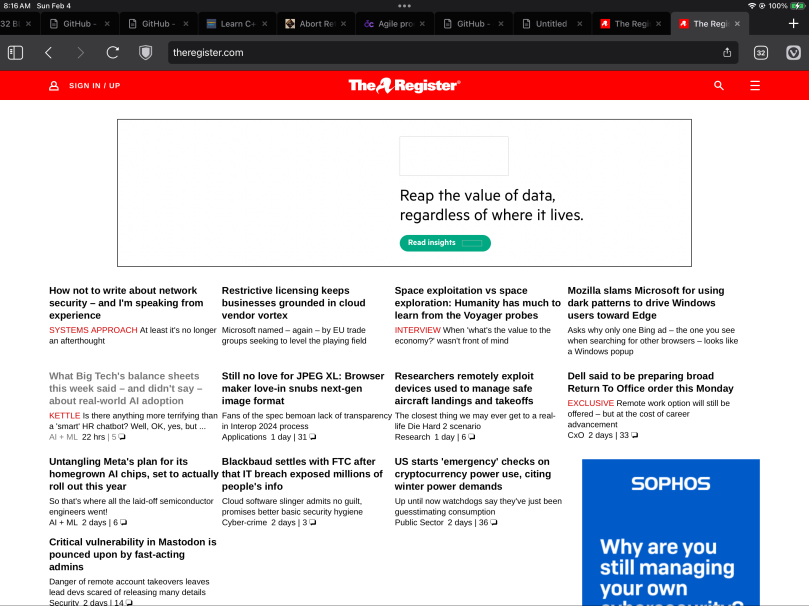I’m writing this post on my second generation 12.9” iPad Pro, running with ipadOS 17.5.1. That iPad was introduced June of 2017, seven years ago. I didn’t purchase it until nearly two years later when Apple put in under serious markdown in the local Apple store. Because the store didn’t have much of a choice at that time, I wound up with an iPad with 512 GiB of storage and cellular connectivity. I never signed up for another line to connect the iPad, as I could simply couple my iPad to my iPhone for what little wireless connectivity I needed.
I’ve been reading lately about how people are hanging onto their iDevices for longer and longer periods, usually measured in two, or three, or maybe even four years. I beat them all with my seven years of usage with this iPad, and seven years of usage with my iPhone 11 Pro Max. Just like my iPad, my iPhone is still being updated with iOS.
I suspect that iOS/ipadOS 18 will be the last major OS upgrade for either device. If that happens, and if both devices are still operational, I doubt I’ll rush right and and purchase replacements. Just because I won’t get the latest feature doesn’t mean the devices still won’t be highly useful to me. I’m typing in this post using a Logitech case-and-keyboard that I purchased at the same time I purchased the iPad, and it too is still working just fine. In the early days of ownership I was all excited about making this my personal computer. That didn’t quite work out as intended, as I needed a personal computer for a lot more than just content consumption and the occasional bit of creative work, such as this blog post.
Furthermore, the state of ipadOS at the time didn’t allow for complicated work, in spite of Apple’s cheerful advertising to the contrary. In the end I gave up on it and the iPad sat on the shelf for quite a while, until Pandemic Lockdown hit, and I resurrected it for a lot of web viewing. While the iPad was “resting,” Apple was busy making changes and releases to ipadOS, so that when I started to use the hardware again I began to appreciate the software. The software has improved to the point where, at this specific point in time, I would stack it up against a Chromebook, such as the Lenovo model I currently own.
This post is being typed into WordPress’ web editor inside Safari. Everything works as it should inside Safari. I know people like to hate on Safari, and at times I do as well, but there are a lot more times where Safari just fades into the background, which any good browser should.
In the early days of ownership I tried to use a Logitech MX Ergo trackball mouse, and I managed to do that. Unfortunately as I grew to use the combination I discovered that am iPad doesn’t handle a mouse very well. The way the mouse pointer was rendered on the screen didn’t help matters at all. Instead I started to use the original Apple Pencil to randomly select any spot on the screen, an action I continue to this day. It is with just a touch of irony that the Apple Pencil is a lot more useful on a touch device such as the iPad, in spite of Steve Job’s stylus comment:
So let’s not use a stylus. We’re going to use the best pointing device in the world. We’re going to use a pointing device that we’re all born with – born with ten of them. We’re going to use our fingers. We’re going to touch this with our fingers. And we have invented a new technology called multi-touch, which is phenomenal. It works like magic.
That was back in 2009, when multi-touch was new and shiny. A lot changed from 2009 because a lot was learned in the intervening years before Apple released its Pencil. But I digress…
I like trailing tech. It winds up being a lot cheaper to acquire and own than the leading edge tech. It always does what I need doing. A perfect combination of low cost and more than adequate capability.



You must be logged in to post a comment.